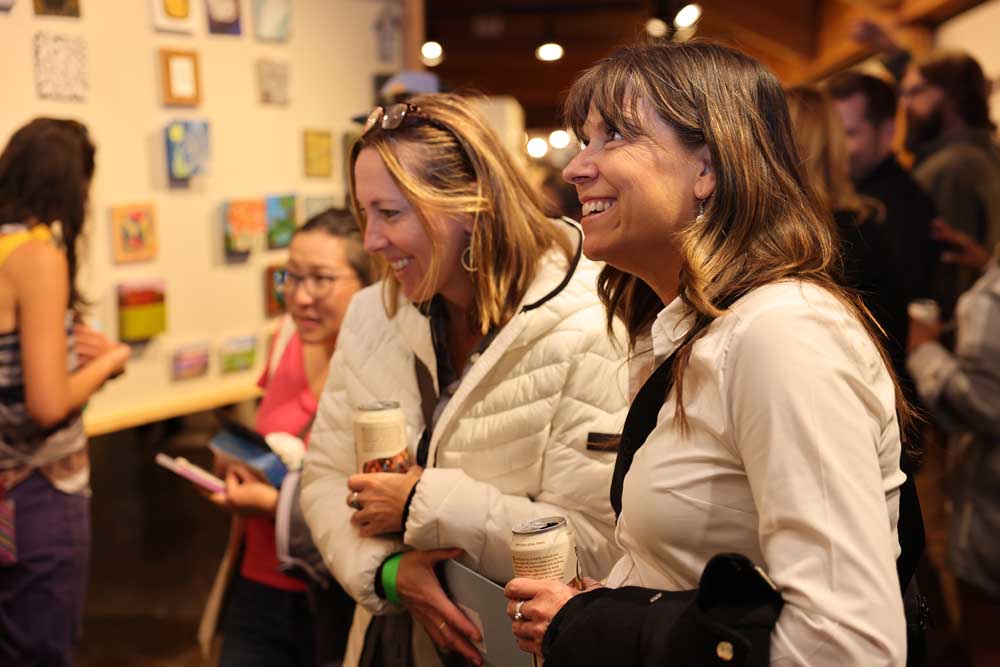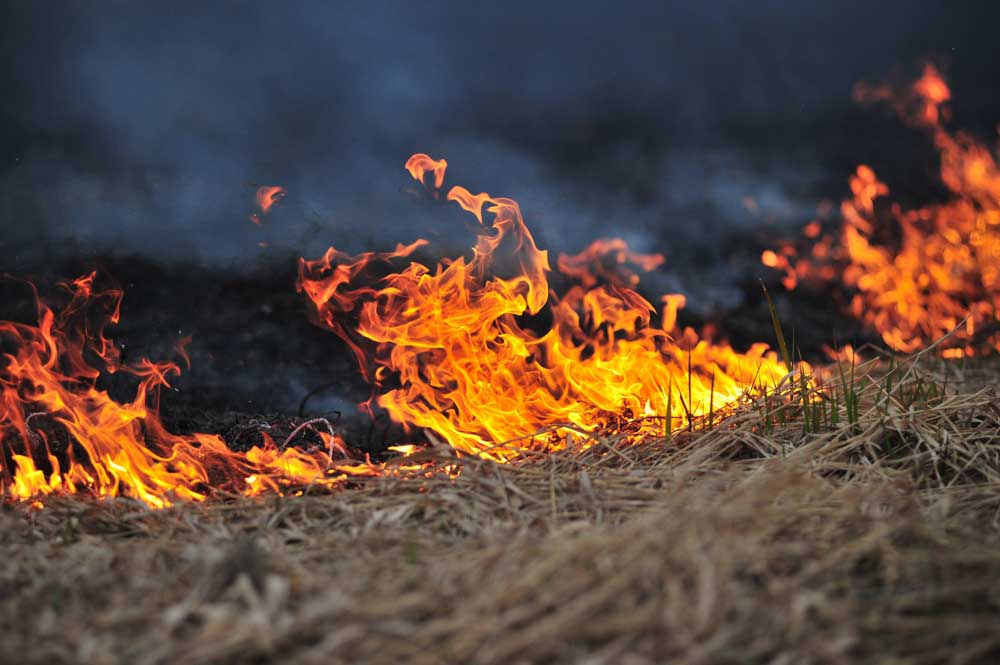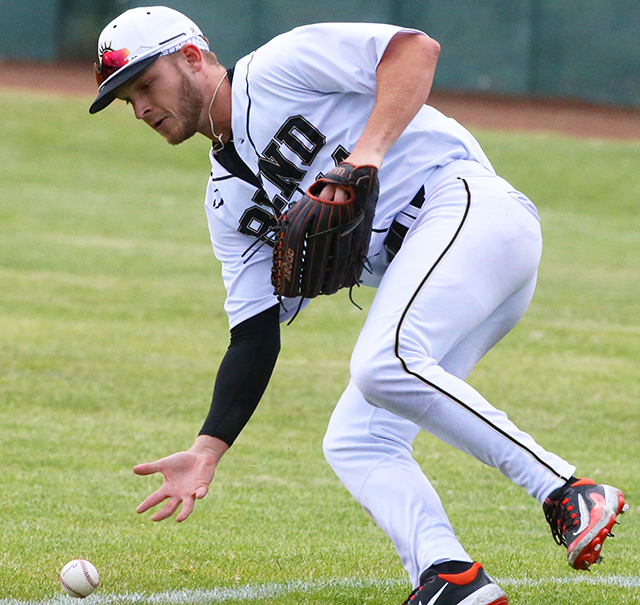Art pieces by the thousands up on museum walls, and up for grabs, for $20
Published 11:00 am Tuesday, October 15, 2024

- Art shoppers browse during the 2023 20-Dollar Art Show Extravaganza. This year's event is Friday.
The highly popular 20-Dollar Art Show returns to its adopted home of the High Desert Museum this weekend. Up since Monday, the show’s big to-do is Friday night’s 20-Dollar Art Show Extravaganza, an event whose 900 tickets sold out within minutes on Sept. 25, according to founding artist Stuart Breidenstein.
That’s the bad news. Well, that and the fact that ticketholders will see, and have the opportunity to purchase and leave with, small works others won’t see Saturday through Monday.
But the good news is that the opposite is true as well: The show remains up through Monday, and more work will go up on Saturday, with a special morning event from 9 to 11 a.m. — alas, also sold out — and then the show is open during business hours, free to those coming exclusively for The 20-Dollar Art Show (to experience the museum as well, they’ll need to pay admission) until it comes down at 5 p.m. Monday.
“We’re really trying to push Saturday as the time to show up,” Breidenstein said. “After 11, you can just show up and buy art right off the walls.”
As art sells, Breidenstein and Dubief have plenty with which to replenish the walls. After all, there are over 6,000 individual works — their maximum size is 36 square inches — hanging around and up for grabs: paintings, wood, textiles, stained glass, ceramic tile work, even small vases mounted for wall hanging.
“As long as it’s got a metal sawtooth hanger and two felt pads on the back with their name on it, that’s the main thing right there,” Breidenstein said.
When it began
That’s a lot more artwork than hung during the event’s origins last decade. Breidenstein founded the show as a way for new artists to get involved in art and for seasoned artists to stretch their creativity, along with allowing them to make some money ahead of the holidays, as well as experiment with new forms.
Breidenstein and his partner, Abby Dubief, continue to organize it in its home of four years, the High Desert Museum.
The antecedent of what became the 20 Dollar Art Show was a little sale back when Breidenstein owned and operated Stuart’s of Bend, a jewelry making shop at the Old Iron Works. He held it in on the main floor of the store, selling small pieces he made from materials lying around his shop.
“I called it the 10 Dollar Sale, and I just made a bunch of jewelry for 10 bucks. I scrounged around the shop, made a bunch of stuff, not precious or anything,” Breidenstein said. After a year or two of doing it, “I was like, ‘Hmm, I should get some other people involved.’ I asked around and said, ‘Anybody want to do a $10 sale?’”
In 2012, he found a dozen artists to participate, holding the show in the upstairs space, with 60 pieces of art in total. “We thought, ‘Dang, that’s pretty good,’” he said, chuckling.
There was one problem, though. The art that folks were bringing in reflected time and effort that went above and beyond a $10 price tag.
“People were kind of overperforming for 10 bucks,” he said. “I thought, ‘$10 just isn’t enough.’ … That’s when it became the 20-Dollar Art Show, which even at the time I thought was still cheap — which it’s supposed to be.”
The show would grow by leaps and bounds through 2016, a pattern that continued after Breidenstein and partner Dubief moved and launched Bright Place Gallery in Ninth Street Village. In 2017, 30 artists contributed nearly 300 works. In 2018, 60 artists and 900 pieces.
Bend artist Jayden Tranby, 15, paints using his feet
In 2019, its last year being held at Bright Place Gallery, Breidenstein told this reporter there were 120 artists and 2,000 pieces. “This will be the biggest event we’ve ever done. We’re a bit nervous but excited,” he said at the time.
With the shuttering of Bright Place Gallery’s home, and the onset of the pandemic, the 20-Dollar Art Show went on hiatus in 2020, but it came back strong in 2021 at the High Desert Museum.
“Events like the 20-Dollar Art Show play an important role in supporting our mission to inspire curiosity and foster connections within the community,” Dana Whitelaw, executive director of the museum, said in the announcement for Friday’s Extravaganza, calling it “a vibrant celebration that encourages conversation and connection while giving emerging artists a valuable platform to reach a broader audience.”
Bigger than ever
This year, the museum brought in a mobile construction office for Breidenstein and Dubief to work out of in the weeks leading up to the show, and also erected temporary walls on which they have hung the many works for the weekend show.
Artists still pay $20 to participate, which allows them to submit up to 29 pieces in the show, which given its inclusive intent has never been juried.
For the first time, this year artists can pay $50 and submit up to 100 pieces. In either case, the artists keep 100 percent of what they make from sales, just as it’s always been.
“We started with 60 (pieces), and now we’re up to 6,000,” Breidenstein said. “We finally broke a hundred times what we started with.”
He also doesn’t have to ask if anyone might be interested in participating: They are.
“We don’t have to do much as far as promotion, either for getting artists or to get people to come and buy the art,” he said. “People just come out of the woodwork to participate, even though $20 is not what it used to be. We’re asking a lot for artists to put a lot of work into something and sell it for 20 bucks.”
Column: Are people who love fall psycho?
Last year, they adjusted for inflation and concluded the price of works should be $28, but they didn’t raise it, which means bargain art pretty much any way you slice it.
If you are not a ticketholder for Friday or Saturday and you’re worried things will be picked over, don’t be. Year after year, no matter the venue or number of participating artists, it’s almost three-quarters of what they hang that actually sells.
“It’s almost always three-quarters of what we hang, within 3 or 4%,” Breidenstein said.








